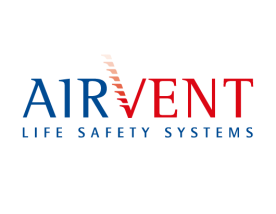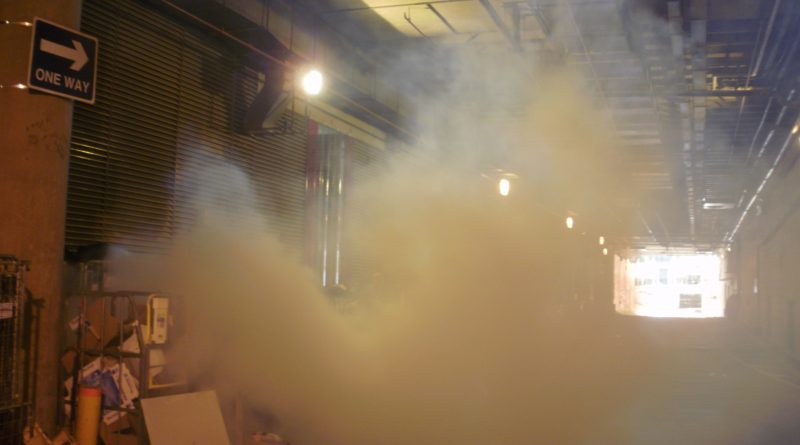Car park smoke ventilation systems – you need to get it right
Car park smoke ventilation systems - you need to get it right
One of the biggest concerns in this sector is the improper installation of fire safety systems and component parts – notably in environments such as enclosed or underground car parks where there is little natural ventilation. These car parks in particular need to be fitted with smoke ventilation systems and these systems are essential as they enable fire rescue services to access the area more quickly so they can identify and manage the fire hazard effectively. In addition, these systems also maintain day to day ventilation and prevent vehicle exhaust build up.
As with any safety system, there are a number of considerations that may limit its effectiveness and these should be examined closely by those who install them – more so if the issue regards the installation itself.
The following areas are a particular concern and close attention should be paid by any individual or business working within them:
Cabling of smoke control systems and system failure risk
One of the most serious issues regarding the installation of ventilation safety systems is improper use of certain cables. Using the wrong cable can be catastrophic; research into car park fires shows that modern cars built 2000-ondward produce larger fires at higher temperatures than older models, and this can lead to cables failing prematurely due to their inability to withstand high temperature.
This is a major issue when it comes to controlling smoke and suppressing fires and can lead to potentially deadly consequences; there’s no point having a cutting-edge system of fans and sprinklers if the cables and controls governing them cannot resist the fire.
Installers should also avoid installing smoke control directly systems above parking spaces to avoid excessive heat and flame impingement as direct contact with fire can decrease the effectiveness of the system exponentially.
Suppression systems
There has been much debate regarding the interaction between smoke venting systems and sprinklers – technical controversy has been apparent for many years. There are still no universally accepted criteria for combining the two despite significant research and testing and a number of arguments from experts on both sides.
Some authorities on the subject suggest that the removal of heat and smoke can delay sprinkler systems which detect a fire from the presence of excessive heat and elevated levels of smoke in the immediate atmosphere.
On the other hand, some argue that in the event of a fire smoke presents the biggest threat to life and ventilation systems can prevent smoke related injury.
Main extract fans in car parks
Installation of the main smoke extractor fans within car parks is common: these fans are usually rated for a temp of either 300 or 400┬░C and this allows them to withstand high temperatures for a designated length of time.
The problem with this is that people often misinterpret ‘fire rated’ and ‘temperature rated’- leading to potentially hazardous situations arising. Temperature rated fans that are installed may fail because only component parts can withstand high temps and these fans need to be enclosed in a fire resistant enclosure that has the equivalent fire rating of the compartment within which they’re located.
Jet fan location
Location is a key feature of jet fan system design and on occasion, important considerations can be overlooked. This can jeopardise maximum efficiency of the system and lead to other issues. Some things to consider when installing a jet fan system include:
– The proximity of fan to extract point – if jets are too close to the extract grille they can cause turbulence which in turn decreases the extract efficiency
– Coordination with sprinkler system – it is important to ensure minimal impact on existing sprinklers and sprinkler pattern whilst also avoiding any delay in sprinkler activation
– Consideration of impulse fan effect on water from sprinkler or mist suppression systems (this is currently not well defined in BS documents and requires further research).
– Consideration of proximity to CO2 monitoring heads and other fire detection devices – it is essential to minimise impact on detection systems as interference may render the entire model inoperative.
– Jet fan location should always be commissioned in accordance with BS7346: Part7: 2006 (although do bear in mind that this document is currently under review)Siting of main control panels and associated transfer switch
Control panels should always be housed within a one hour fire rated enclosure and not within the main body of the car park or places of high fire risk. This ensures that the primary controls remain operable for the longest time possible and lessens the probability of system failure.
Fire rated ductwork and silencer specification
It is essential that in any car park, heat and smoke ventilation systems, ductwork, fans, silencers, fixings and all components such as smoke control dampers and automatic opening vents all perform continuously; at least as long as the fans when there is a fire.
I would suggest that designers and installers of car park ventilation systems should buy and read: British Standard 7346: Pt7: 2006, the following information is particularly relevant and explains briefly the issues surrounding ductwork and silencer specifications:
Ductwork and fixings including silencers within the car park should be constructed of materials capable of surviving exposure to gasses having temperatures greater than or equal to 800┬░C and should maintain their stability and integrity under fire conditions.
Where ductwork penetrates through a fire compartment wall or slab the ductwork should have fire resistance at least equal to that required for the compartment or be in an enclosure with a fire resistance at least equal to that required for the compartment.
A smoke control damper construction should not contain a device that is able to change position of the damper once the safety position has been reached, i.e. the damper should not change position unless required by direct instruction from a control system.
It is assumed that power is maintained throughout the car park where the system is installed. Consequently smoke control damper assemblies should have no thermal devices to cause uncontrolled operation and no automatic return mechanisms that might, for instance, operate on loss of power.
Verification of systems and commissioning
The British Standard provides commissioning criteria for all types of car park ventilation including natural and assisted ventilation systems as well as ducted and jet fan mechanical systems. Again, I would highly recommend that designers and installers of these ventilation systems read these criteria to prevent any potential system failures.
Written by Keith Elves


